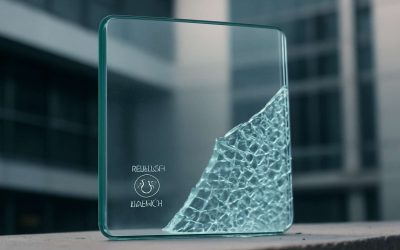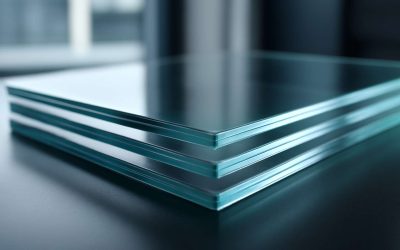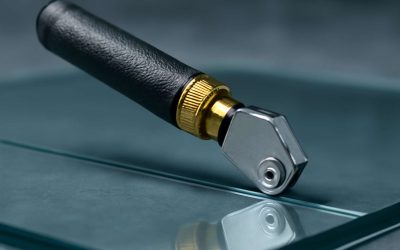Glass is an amazing material that has helped transform the way we live. It is used in automobile windshields and windows, architectural glass doors and tables, shower stalls, refrigerator trays, diving masks and many other applications. Glass can be strengthened to make it safer and stronger, increasing its ability to withstand the stresses of everyday use. Glass can be strengthened by thermal tempering or chemical ion-exchange. Both processes alter the surface of the glass and change its tensile strength, but each has its own advantages.
Both processes create a layer of compressive stress on the glass’s surface, making it more resistant to the tensile stresses that cause glass to crack and break. Tempering is achieved by heating the glass above its strain temperature then rapidly cooling it or quenching it. The rapid cooling creates a differential in stress between the internal and external layers of the glass. The external surface cools faster than the inner, causing a layer of compressive stress on its surface that neutralizes the internal tensile stress.
Chemically strengthening, also known as ion exchange, alters the surface of the glass by replacing sodium ions on its surface with larger potassium ions. Unlike tempered glass, the ion-exchange process does not result in any measurable optical distortion and allows for the creation of thin plates up to 50 mm thick. It is also possible to produce an ion-exchanged glass with an irregular geometry and, like tempered glass, the results are extremely durable.
As well as increasing the impact resistance of glass, ion exchange makes it more difficult for flaws in the surface to initiate and propagate. These flaws can include surface scratches, abrasions, nicks and pits. These flaws can eventually lead to the onset of tensile stress, which will cause the glass to crack and shatter into thumbnail-sized pieces. The ion-exchange process, combined with Corning’s glass compositions, makes it easier for the surface of the glass to resist these stresses.
As a result of these advancements, chemically strengthened glass can be found in an incredible variety of applications. It is used in aircraft cockpit windshields to withstand the impact of birds flying at 400 knots (440 km/hr), as a component of bulletproof glass, and even as the cover glass on many mobile phones. The lifesaving EpiPen autoinjector, which delivers an injection of adrenaline to treat severe allergic reactions, is also made from chemically strengthened borosilicate glass. It is estimated that each year, the injections from this type of glass save thousands of lives around the world. That is a very good reason to celebrate the power of glass!



0 Comments